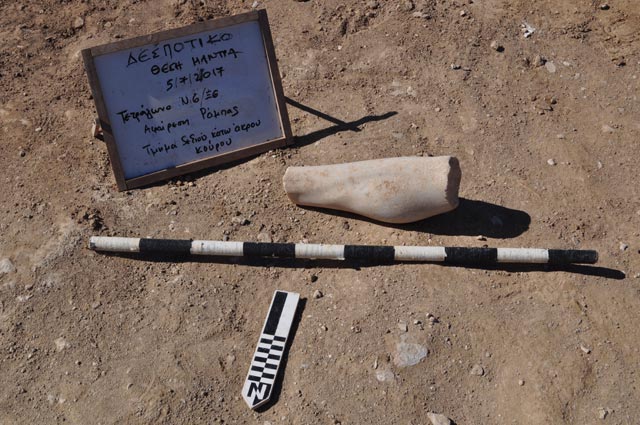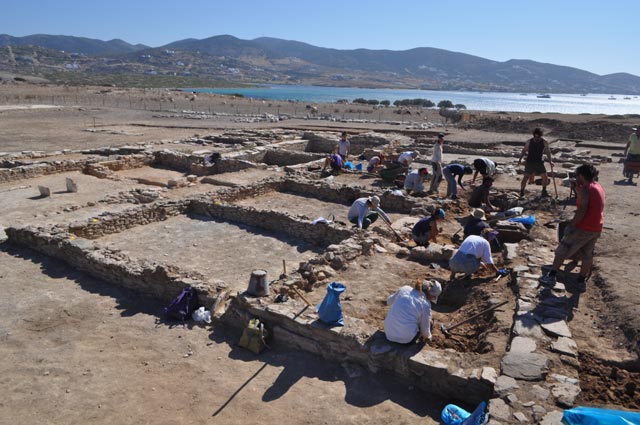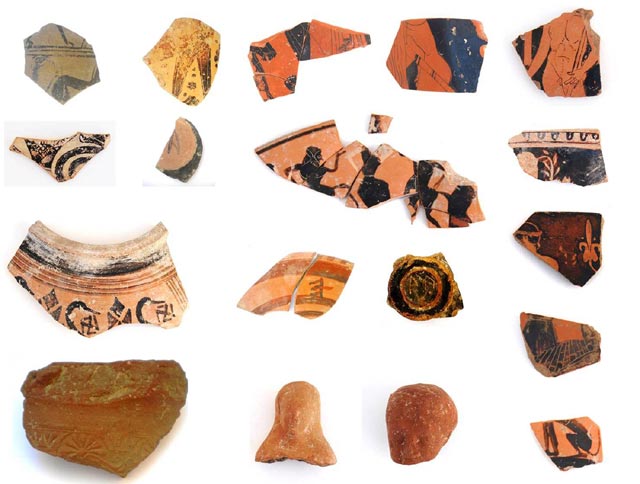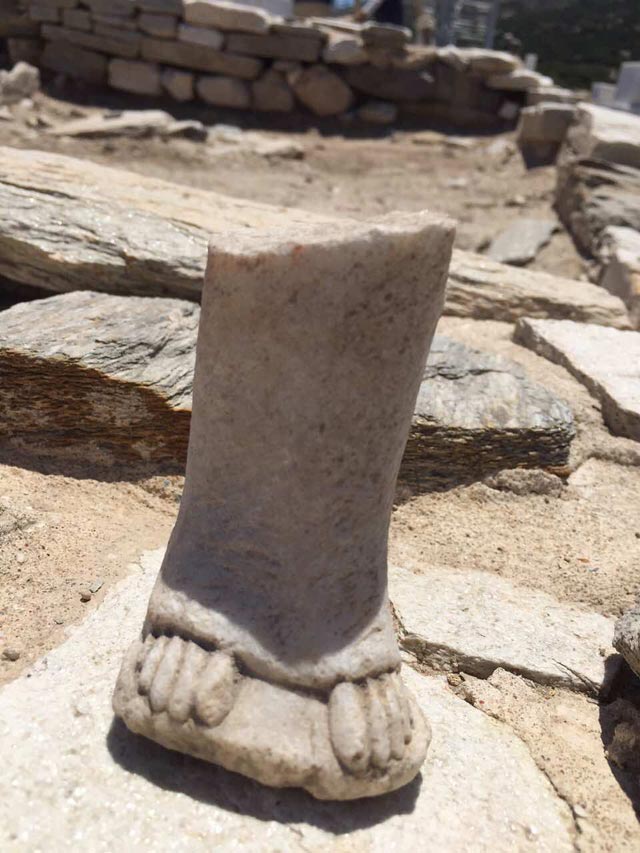New buildings were unearthed during excavations and restoration work carried out from 30 May to 7 July 2017 in the sanctuary of Apollo on the uninhabited island of Despotiko (Mantra position), west of Antiparos, Greece. The results of this year’s works are evaluated as particularly important for the topography of the sanctuary. What stands out from this year’s findings are a marble statue daughter fragment dating to the early Archaic period, a fragment from a plinth of an archaic kouros and a fragment of the tibia and foot ankle of a kouros .
The systematic excavation at Despotiko began in 1997 and brought to light one of the most important archaeological sites in the Cyclades. It is run by the archaeologist of the EFA of Cyclades, Yiannos Kouragios and was carried out this year thanks to kind sponsorships.
The investigations focused on the excavation of the building complex that had been partially explored in 2016 in the area immediately south of the archaic mosque. This year, eight other spaces to the south and west side of this complex came to light, without however identifying its boundaries. The complex consists of 12 rooms and its total visible area reaches 180 m². Although their dimensions vary, the densely populated areas of the complex have the same orientation, with entrances to the south. Some of them were probably atrium, perhaps courtyards or vestibules.
Based on the findings (abundance of pottery Archaic and Classical period) and some architectural elements, the digger feels that the buildings functioned as a storage space and accommodation, documenting the high traffic of the sanctuary and the need to expand to meet the large number of believers up to the 4th century B.C.
Work was also extended to buildings outside the mosque. The investigation of building B that had been excavated in 2007 and 2013 was completed. All areas and phases of use were excavated dating back to the 7th century BC to the first half of the 6th century BC (The main phase of the building) and in the late 6th century B.C.
At the NE terminus of the peninsula, close to the coast, another building measuring 4.40m x 4.30m was spotted and excavated. Only its foundations are saved. Its location and its planing point to an observation or tower.
The findings of the excavation were rich and varied. Indicatively more than 20 black-glazed lamps and 30 vessels fragments with engraved signs (ap, apol, ANETHIKE etc.), fragments of “Miliakon” jars and black-colored goblets, red-cratering fragments with nude performances, everyday vessels such as crucibles, basins , jars, salt-bottles, bottles etc., many metal objects (eels, springs, hooks, etc.).
The restoration work lasted 4 weeks and the restoration of two columns (including their capitals) of the restaurant was completed and another column has been prepared for restoration. Also, masonry maintenance works were carried out in buildings A and B.
In addition to the members of the scientific team, many students and archaeologists from universities in Greece and abroad participated in the excavations.
Διαβάστε αυτή τη σελίδα στα: 




